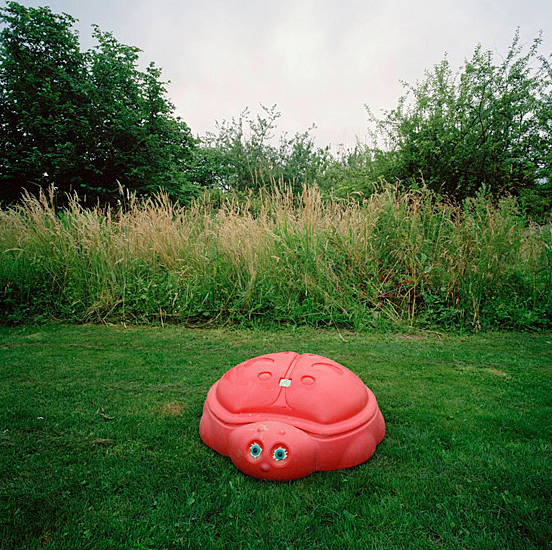By guest correspondent Aric Mayer:

For the past three years I have been working on an intimate body of photographs [the slide show can be seen here] made within walking distance of my home and studio. Our property is in the middle of an orchard, parts of which have been left to go feral, the trees growing towards their natural grizzled tangle, while other parts have been bulldozed and prepared for development, only to be left for the weeds and the thistle.
For a time it has been a place grounded between categories, neither kempt nor wild. I have come to see it as a kind of crucible within which local tensions are played out in ways with global significance.
Probably the most significant issue of our lifetimes will be the emergence of global climate change as a consequence of human development. How we picture living with nature has everything to do with what we can imagine as a response to looming catastrophe.
There have been sets of parallel visual expectations that emerged over the last 50 or so years, on the one side there is a vision of nature as pristine ala Eliot Porter’s The Color of Wildness, and on the other side a vision of the American suburb that is bulldozed flat, gridded off and built up in a completely controlled fashion. Over the last few years, that American vision of the huge housing development has become quickly associated with decay and entropy as so many sit unfinished and empty, partially built and partially ruined. Suburbia and wildness developed mutually exclusive visions were neither had room for the other, and yet both have to exist.
A successful city is generally imagined as completely counter-entropic. It is permanent progress. Fully realized. In contrast, nature is understood to be cyclical. It is a system where the counter-entropy/entropy tension is contained and fully resolved within a system that is sustainable. An organism is generated, feeds, grows, dies and decays, returning its components completely to the ecosystem.
There is a dialectical tension between the constant effort required to sustain a counter-entropic city and the tendency of nature to absorb everything into a cyclical rhythm of growth and decay. As Carl Jung said in his essay “Alchemical Studies,” “Nature must not win the game, but she cannot lose.”
This interaction between home and wildness has profound psychological implications for it mirrors the evolution of human consciousness itself. A similar and analogous set of tensions is played out in the interaction between consciousness and unconsciousness, the first being the creator of technology and home, and the second being a product of nature, emerging from millions of years of evolution. These exist in dynamic tension, in constant movement to dominate or subsume the other. In fact, the history of development is in a sense the history of human consciousness, with many of the same tensions and contradictions.
Cross-posted from Aric’s blog.
Discussion